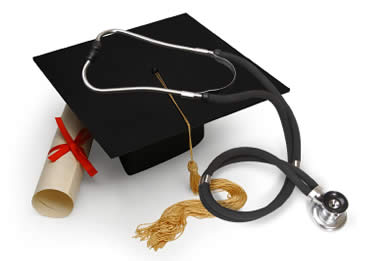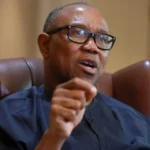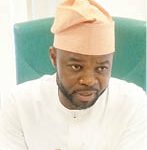Our elders say that when two elephants fight, it is the ground that suffers. These mighty creatures pay no heed to the ground as they push, pull and hit one another. Indeed, it is the ground beneath them, the grass that is crushed, the soil that is ruined and the poor insects that are destroyed who suffer the most. This is the parable of that of the Nigerian medical student.
Once upon a time, it was only ASUU strikes that affected medical students. Our six-year sojourn in university would be prolonged to seven, eight or even up to ten years due to the incessant ASUU strikes. Now, however, new associations in the health sector have also joined in the fight for justice and better working conditions in Nigeria. It pains my heart, when I realise that almost all strikes that involve teaching hospitals inadvertently affect medical students. First, it was JOHESU (Joint Health Sector Union) composed of all health workers apart from doctors, whose strike caused the hospital to offer only skeletal services. The wards were closed and patients were discharged as nurses who are typically in charge of the wards were on strike. Medical students suddenly woke up one morning and realised that they had no or fewer patients to practice on. Then came the NARD (National Association of Resident Doctors) strikes which also affect the students as the patients are once again discharged and there is no one else to use for demonstration.
- Herdsmen initiate plan to sack criminals among them
- Edo to reclaim forest reserve from banditry, kidnapping
For the benefit of those who do not understand the Nigerian Medical University system, I will explain how our undergraduate system works. Medical school is traditionally six years in Nigeria. The first three years are called pre-clinicals where students are taught the basics of Medicine: Anatomy, Physiology and Biochemistry in the university. Therefore, at the university level only ASUU strikes affect the students. In the fourth year, medical students move to the teaching hospital where they are being taught the core subjects of Medicine: Surgery, Medicine, Obstetrics and Gynaecology and Paediatrics. They are also exposed to other subspecialities like Psychiatry, ENT, Radiology etc. In the teaching hospitals they are taught by both Consultants (who belong to ASUU, MDCAN and NMA) and Resident doctors.
Now this is where it gets confusing; the consultants typically give lectures in classrooms and then teach during ward rounds on patients. However, during this ward rounds, they are expected to teach not just medical students, but residents as well. And so, the students don’t really learn much. I remember my first consultant ward round in surgery when I heard them discussing a patient and it felt like they were speaking German. Much of what they discuss is too concentrated for the medical students. It is the residents (registrars and senior registrars), who themselves are in training, who recognize the helplessness of the students, that come to their aid. These residents, sacrifice their time and energy, by organising patient bedside teaching, tutorials at night and mock exams so that medical students understand the core principle of medicine. Bear in mind that these residents also have their work to do. So, after seeing their patients, they return to the hospital in the evenings and night to teach students. Many a time, we would be relaxing in our hostels or in class reading at night, only to be told that the doctor on call asked us to come over to witness another exploratory laparotomy for typhoid perforation. Most of us learnt how to insert an IV cannular from residents during call hours. These residents, bless their heart, taught and still continue to teach medical students the fundamentals of practice. Doctors all over the world, know the struggle all too well.
Even now, while on strike, I know a few, who sneak and organise tutorials for students, just so they can help them pass their exams.
So now that they are on strike, and school is open- the mighty question everyone is ignoring is- what happens to the medical students? Residents in any hospital, outnumber their consultants. Are the consultants supposed to see all the patients and teach students as well? With which number? And on which patient? The wards of tertiary hospitals have since been closed as the consultants cannot provide both in-patient and out patient care and teach students at the same time. And because the wards are closed, there are no patients for the students to clerk and examine. How then do they practice? I watched and assisted in close to a hundred caesarean sections since medical school before I was confident enough to hold a scalpel. How can a student who spent two weeks in ENT posting, during this strike and not seen a single tracheostomy (which is a very common ENT emergency procedure) being done claim to be a doctor? How can a student be in O&G for a month claim not to have seen a Manual vaccum aspiration for miscarriage?
Did I hear someone say- You tube videos? Yes, they may be a temporary solution, but all doctors will tell you that there is nothing like observing with the naked eye and actually assisting that can compare to any video. Besides, how can a video guide you to do a lumbar puncture? You will just go and injure the patient’s spinal cord! These things need constant practice and in many cases are taught by a senior doctor guiding your hand. Each doctor’s style is unique, and so as we observe, we pick out the techniques we like and simulate them back in our hostels. We learn from consultants, residents, and nurses.
So, what is the way forward? Do we halt the semester whenever NARD or JoHESU goes on strike? That is not fair. Besides, there are other students apart from medical students. What about when ASUU goes on strike and NARD and JOHESU do not? Will students continue bedside teaching only without progressing in the university? Nope. The system is therefore designed for both ASUU, NARD, JOHESU and MDCAN (Medical and Dental Consultants association of Nigeria) to work together in harmony for a common goal- the patient and the students.
In all this, it is the Nigerian medical student that suffers. The Nigerian government has turned this strike into a media frenzy, a debating platform, an avenue to trade lies and insults. I do not have to remind you that many of these politician’s children school abroad and therefore are not subject to our dwindling educational system. But is it not penny wise, pound foolish, if these students turn out poorly? The money used to travel abroad because one doctor botched up your surgery, would it not have been better invested to teach them how to do these procedures properly?
This fight is not about ego, or teaching resident doctors a lesson. The problem in the health sector should be addressed comprehensively so that we do not wake one day and wonder how we crashed so violently. That Nigeria is exporting doctors to other countries now is because, we were taught well. I dare say that Nigerian doctors excel well outside the country because we still have high standards in our medical schools. But is that still the case? With what these young ones are going through, will that still be the case five years from now?
What the FG is doing now is a clear case of cutting one’s nose to spite the face.

 Join Daily Trust WhatsApp Community For Quick Access To News and Happenings Around You.
Join Daily Trust WhatsApp Community For Quick Access To News and Happenings Around You.


